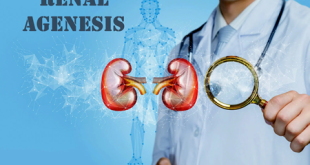What is rhabdomyolysis?
Rhabdomyolysis can be a life-threatening condition caused by muscle breakdown and muscle death. This dangerous muscle damage can result from overexertion, trauma, toxic substances or disease.
As muscle cells disintegrate, they release a protein called myoglobin into the blood. The kidneys are responsible for removing this myoglobin from the blood so urine can flush it out of the body.
In large quantities, myoglobin can damage the kidneys. If the kidneys cannot get rid of the waste fast enough, kidney failure and death can occur.
Pathophysiology of Rhabdomyolysis
The multiplicity of potential causes of rhabdomyolysis notwithstanding, the final common denominator appears to be disruption of the sarcolemma and release of intracellular myocyte components. Mechanisms of cell destruction in rhabdomyolysis include cellular membrane injury, muscle cell hypoxia, adenosine triphosphate (ATP) depletion, electrolyte disturbances that cause perturbation of sodium-potassium pumps, and generation of oxidative free radicals.
The sarcolemma, a thin membrane that encloses striated muscle fibers, contains numerous pumps that regulate cellular electrochemical gradients. The intercellular sodium concentration is normally maintained at 10 mEq/L by a sodium-potassium adenosine triphosphatase (Na/K-ATPase) pump located in the sarcolemma.
The Na/K-ATPase pump actively transports sodium from the interior of the cell to the exterior. As a result, the interior of the cell is more negatively charged than the exterior because positive charges are transported across the membrane. The gradient pulls sodium to the interior of the cell in exchange for calcium through a protein carrier exchange mechanism. In addition, an active calcium exchanger promotes calcium entry into the sarcoplasmic reticulum and mitochondria.
These processes depend on ATP as a source of energy. ATP depletion appears to be the end result of most causes of rhabdomyolysis. This depletion disrupts cellular transport mechanisms and alters electrolyte composition.
An increase in intracellular calcium levels results in hyperactivity of proteases and proteolytic enzymes and generation of free oxygen radicals. These enzymes and substances increasingly degrade myofilaments and injure membrane phospholipid with leakage of intracellular contents into plasma. These contents include potassium, phosphate, CK, urate, and myoglobin.
Excess fluid may also accumulate within affected muscle tissue. The action of phospholipases in insect and snake venom may cause hemolysis, muscle damage, endothelial necrosis, rhabdomyolysis, and acute kidney injury (AKI). Additionally, muscle damage is amplified by infiltration of activated neutrophils. An inflammatory cascade and reperfusion injury sustains muscle damage and degeneration.
Myoglobin is an important myocyte compound released into plasma (see the image below). After muscle injury, massive plasma myoglobin levels exceed protein binding (of haptoglobin) and can precipitate in glomerular filtrate. Excess myoglobin may thus cause renal tubular obstruction, direct nephrotoxicity (ischemia and tubular injury), intrarenal vasoconstriction, and acute kidney injury.
Rhabdomyolysis – Causes
When muscle is damaged, a protein called myoglobin is released into the bloodstream. It is then filtered out of the body by the kidneys. Myoglobin breaks down into substances that can damage kidney cells.
Rhabdomyolysis may be caused by injury or any other condition that damages skeletal muscle.
Problems that may lead to this disease include:
- Trauma or crush injuries
- Use of drugs such as cocaine, amphetamines, statins, heroin, or PCP
- Genetic muscle diseases
- Extremes of body temperature
- Ischemia or death of muscle tissue
- Low phosphate levels
- Seizures or muscle tremors
- Severe exertion, such as marathon running or calisthenics
- Lengthy surgical procedures
- Severe dehydration
Who can get rhabdo?
Anyone can get rhabdo, but some workers are at a higher risk than others. People who work in hot environments and/or perform strenuous physical tasks have a higher chance of getting rhabdo. Some of these groups include:
- Firefighters (both structural and wildland)
- Police officers
- First responders
- People who work in hot environments, such as farm and construction workers or forge workers
- Military service members
- Athletes
Other things that can increase your chances of developing rhabdo include:
- Using illegal drugs, such as cocaine and methamphetamine
- Excessive alcohol consumption
- Taking supplements, such as creatine and ephedra
- Consuming large amounts of caffeine or other stimulants
- Different infections, including flu, HIV, salmonella, staph, strep, and Epstein-Barr virus (mono)
- Certain medical conditions, such as uncontrolled diabetes, sickle cell disease, thyroid disorders, and muscular dystrophy
- Some medications, including some antibiotics, antidepressants, cholesterol-lowering drugs (statins), and cold and allergy medicines
Recognizing the symptoms
The initial symptoms of rhabdo can be subtle. They’re not specific and may look like other conditions. The symptoms of rhabdo include:
- Muscle weakness
- Low urine output
- Fatigue
- Soreness
- Bruising
- Dark, tea-colored urine
- Infrequent urination
- A fever
- A sense of malaise, or feeling unwell
- Nausea
- Vomiting
- Confusion
- Agitation
These symptoms may start to become apparent after muscle injury. Some people might not notice symptoms until a few days after an injury. You might not show any symptoms at all.
If you suspect that you have rhabdo, it’s a medical emergency. Seek treatment as early as possible to avoid the permanent or fatal effects of rhabdo.
Rhabdomyolysis complications
If not treated early, rhabdomyolysis can lead to complications, such as:
- Very high potassium levels in the blood (hyperkalaemia); this can lead to an irregular heartbeat or cardiac arrest
- Kidney failure or problems with the liver
- An abnormal heart rhythm (arrhythmia)
- Seizures
- Very low blood pressure or shock
- Bleeding that is hard to control
- Compartment syndrome; this occurs when too much pressure builds up in the injured compartment groups of muscles (compartment). The extreme pressure hinders blood flow to and from the affected tissues and can cause further muscle damage and death.
How do medical professionals diagnose rhabdomyolysis?
Rhabdomyolysis is suggested by the history of recent and past events and the physical examination. It is confirmed by blood and urine testing. An important part of diagnosing rhabdomyolysis is a comprehensive medical history and physical examination.
- The medical history may include questions about any medication use, drug and alcohol use, other medical conditions, any trauma or accident, etc. Blood tests include a complete blood count (CBC), a metabolic panel, muscle enzymes, and urinalysis.
- The levels of myoglobin can be elevated in blood and urine
- The diagnosis of rhabdomyolysis is confirmed by detecting elevated muscle enzymes in the blood, which include creatine phosphokinase (CPK), SGOT, SGPT, and LDH. The levels of these enzymes rise as the muscle is destroyed in rhabdomyolysis.
- While the SGOT, SGPT, and LDH enzymes are found in muscles, they are more frequently associated with the liver. Therefore, elevations of SGOT and SGPT, without elevated CPK, are more typically indications of liver damage.
Of note, CPK is also in the heart muscle (cardiac muscle) and brain. The laboratory is usually able to distinguish between the different components of this enzyme. For example, the fraction coming from skeletal muscle is referred to as CK-MM and the one from heart muscle is designated as CK-MB. There are small amounts of the CK-MB component in the skeletal muscle as well.
Treatment options for Rhabdomyolysis
If a team of medical professionals diagnoses rhabdo early in its progression, they can successfully treat it without long-term damage to the kidneys.
Most people with rhabdo receive fluids through their veins in an intravenous (IV) drip. Some people may require dialysis or hemofiltration to address kidney damage in more severe cases. People with traumatic and nontraumatic rhabdo often receive the same treatment, but this may vary depending on the specific cause.
People who have severely high potassium levels will receive medications that rapidly reduce levels in the bloodstream.
Fluid recovery
Getting enough fluid into your body is the first and most important treatment. A healthcare professional must start administering IV fluids quickly. This fluid should contain bicarbonate, which helps flush the myoglobin out of your kidneys.
Medications
Your doctor may prescribe medications such as bicarbonate and certain kinds of diuretics to help keep your kidneys functioning.
They can also treat high potassium levels in the blood (hyperkalemia) and low blood calcium levels (hypocalcemia) with appropriate IV fluids.
Dialysis
If kidney damage and acute renal failure have already started, you may need to receive dialysis. During dialysis, blood is taken out of the body and cleaned in a special machine to remove waste products.
Home remedies
In mild cases of rhabdo, home treatment can help aid in the recovery process. The goals of at-home treatment include resting the body so your muscles can recover and rehydrating to help prevent further kidney damage.
When you’re feeling fatigued, recline in a comfortable position and try to relax. Drink plenty of water and other clear liquids, such as light broth and sports drinks.
What can I do to prevent Rhabdomyolysis?
You can’t completely eliminate your risk for rhabdo, because we currently don’t know all of the risk factors. However, there are ways you can lower your risk.
- Be aware that job or recreational activities involving exertion and/or heat exposure could increase your risk for rhabdo and try to avoid these risk factors if possible.
- Learn the signs and symptoms of heat-related illnesses and take steps to prevent getting overheated. Take frequent rest breaks and use cooling stations if available. More information on heat stress and heat-related illness can be found on the NIOSH Heat Stress page.
- Become acclimatized to your physical activity level and the heat before working for long periods of time. Keep this in mind when returning to work from vacation or starting a new job in a different climate.
- Stay home from work when you’re sick. Many illnesses (such as the flu) and cold medications may increase your risk for rhabdo. Staying home when sick will also protect your coworkers from getting sick.
- Stay hydrated. Drink caffeine-free and low-sugar products. Avoid alcohol use when working in the heat.
If you start experiencing any rhabdo symptoms, stop your current activity right away, cool down, start drinking fluids, and go to a healthcare provider to get checked for rhabdo.
 Diseases Treatments Dictionary This is complete solution to read all diseases treatments Which covers Prevention, Causes, Symptoms, Medical Terms, Drugs, Prescription, Natural Remedies with cures and Treatments. Most of the common diseases were listed in names, split with categories.
Diseases Treatments Dictionary This is complete solution to read all diseases treatments Which covers Prevention, Causes, Symptoms, Medical Terms, Drugs, Prescription, Natural Remedies with cures and Treatments. Most of the common diseases were listed in names, split with categories.







